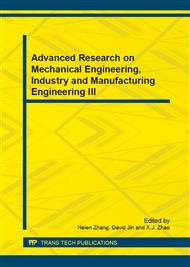p.259
p.263
p.268
p.272
p.277
p.281
p.285
p.290
p.294
Study on Electromagnetic Shielding Material Performance Based on the Status of the Test Method
Abstract:
Materials characterization techniques is the basis of the Materials Research in recent years, a variety of new electromagnetic shielding materials and absorbing materials the rapid development of new demands on the performance of this class of materials testing technology. At home and abroad with the determination of electromagnetic performance parameters more domestic research units used in different ways depending on the respective conditions, test results, there is a big difference. This article focuses on the test method of shielding effectiveness and microwave absorbing property of the material from the device, principles, conditions of use, frequency range, the pros and cons of the introduction and commentary.
Info:
Periodical:
Pages:
277-280
Citation:
Online since:
August 2013
Authors:
Price:
Сopyright:
© 2013 Trans Tech Publications Ltd. All Rights Reserved
Share:
Citation:


